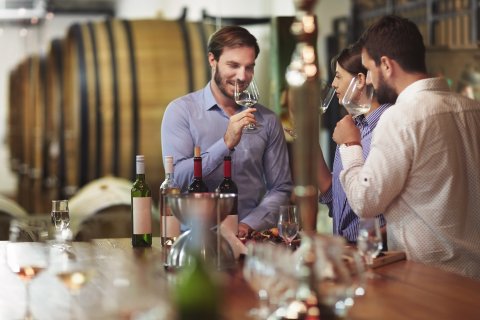Language in wine reviews: consistent prose or intentional gibberish?
Full. Round. Elegant. Forward. These are the sorts of words frequently used to describe wine. Some readers will immediately understand what the reviewer means; for others, such descriptions sound like gibberish. Olfactory researcher Ilja Croijmans (affiliated with Utrecht University) and his colleagues analysed 76,410 wine reviews to determine whether the words used by wine experts are consistent and informative, or whether they are merely a poetic exercise. Croijmans: ‘Based on the review alone, the computer was able to predict what wine was described with a high degree of accuracy.’

Communicating the colour of wine to another person is easy. As soon as someone wants to describe what they are tasting or smelling, however, it becomes much more complicated. ‘Unlike what you see, what you taste or smell is not easy to describe. Nevertheless, wine reviewers want to convey the taste and smell as accurately as possible. I wondered if the words they use to describe wine are used consistently.’
Dry warm hay
Using a computer programme, Croijmans and his colleagues analysed 76,410 wine reviews (in English) written by 13 different reviewers. This is how the researchers arrived at a list of 146 frequently used words. ‘In the article in Natural Language Engineering journal, we call this the “wine wheel”, a list of 146 words that all 13 reviewers use to describe wine, ranging from “apple” to “tannin”. You could use the list of 146 words as a wine dictionary. Everyone can use it to learn to describe wine more effectively.’
If you give different wine experts the same kind of wine, do they say the same thing?
33 grape varieties
In addition to creating this ‘wine wheel’, the researchers wanted to answer the question: if you give different wine experts the same wine, do they actually say the same thing? ‘We entered the wine descriptions in the computer and investigated whether the computer could predict the described wine based on those descriptions. The computer proved to be capable of this: both the colour of the wine (white, red or rosé) and which of 33 possible grape varieties the wine was made of could be predicted with high accuracy.’
Valuable
Croijmans emphasises the importance of being able to accurately describe smell and taste. ‘If you want to describe a wine properly, you have to drink it paying attention to every detail. You pay attention to what you are tasting, and this allows you to better appreciate the complexity of the wine. All of this applies not only to wine, of course, but to everything you eat or drink. When you eat and drink attentively, it makes the experience more valuable.’
The article by Croijmans (Utrecht University) and colleagues Iris Hendrickx (Radboud University), Els Lefever (Ghent University), Asifa Majid (Radboud University/University of York) and Antal van den Bosch (Meertens Institute/Radboud University) is available on the Natural Language Engineering website.

